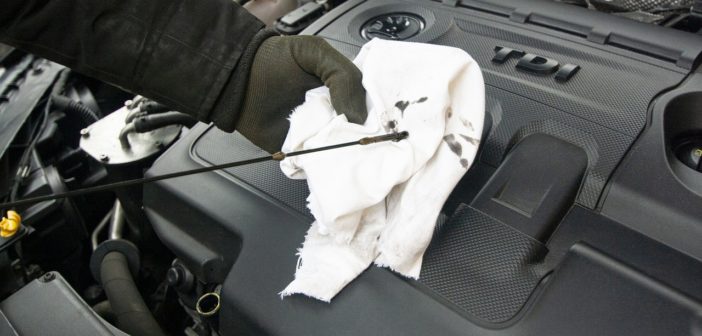Your car’s engine requires an ample supply of clean motor oil to operate properly. Outdated wisdom told drivers to change oil every 3,000 miles. However, advances in engine technology and improved oil quality are some of the reasons why this advice may no longer be accurate for some models. If you do not need to change your oil every 3,000 miles like clockwork, how often should you change the oil? How can you know when the time has come to tackle this important, recurring task other than by checking the odometer reading? There are a few signs that you can look for that may tell you when you should address this auto maintenance need.
Engine Warning Light Is On
The last time your oil was changed, the auto technicians may have placed a small sticker in your car’s windshield remind you to return for an oil change in 3,000 miles, but you now know that this may be overkill. Changing your oil can be expensive and time-consuming, so you understandably want to minimize how frequently you repeat the service without potentially damaging your car. Generally, you should read your car manual to determine the frequency that your automaker recommends. Modern vehicles have an engine warning light that may turn on when the oil level is low or when the engine is overheating. Low oil and poor oil quality are some of the reasons why the engine warning light may come on, but this tells you when it is time to pop the hood and look at the oil dipstick.
Car Maintenance Reminder Indicator
Many vehicles today are built with a maintenance reminder indicator as well. These indicators may monitor the mileage since the last time the system was reset, and the interval may be based on the manufacturer’s recommendation for your specific model. In some cases, these indicators are based on oil quality and level. Understanding how your sensor works could provide you with a better idea about how critical the need is to change your oil when the indicator is illuminated.
Thick, Murky Motor Oil
Regardless of whether you have an older or newer vehicle, a surefire way to determine if you need an oil change is to open the hood and check the oil yourself. This is easy to do with a clean paper towel. Simply locate the dipstick, and pull it out slowly. Wipe the dipstick with a paper towel, and note how thick and murky the oil is. Thicker and darker oil indicates an urgent need to change the oil. You also should observe the oil level. If the oil level is low and the oil quality is still good, this could indicate a leak that requires attention.
Unusual Engine Sounds
If your engine runs for too long with inadequate or filthy oil, its condition could be significantly impaired. You may notice changes in the engine’s performance, and the engine temperature light may be lit when you drive the car for a while. In addition, strange noises may come from the engine. Commonly, this may sound like a ticking or knocking sound. As soon as you notice this type of sound, you should drive your vehicle to the closest oil change center for assistance. If you continue to drive the car in this condition, serious and irreparable damage could occur. If you recently changed your oil, be aware that this could indicate that the wrong kind of oil was used in your car. An oil change is essential in this case as well.
The last thing that you want is to pay for an engine replacement. While oil changes are not convenient and can crimp your budget every few months, they are a relatively minor maintenance task that play a major role in engine health and overall vehicle performance. Get in the habit of manually checking your engine oil every few weeks, and you can quickly determine if you should change the oil soon.




